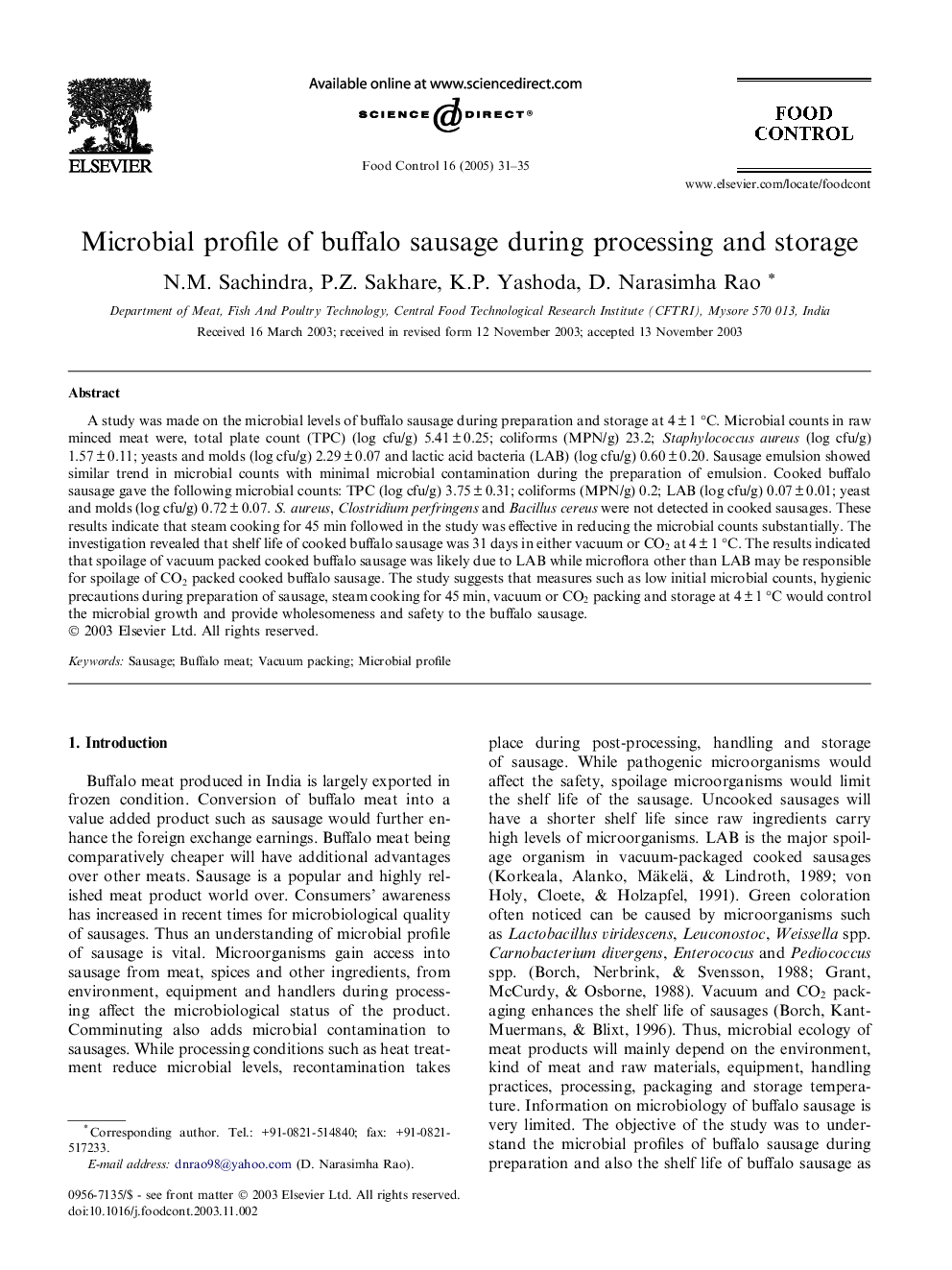| Article ID | Journal | Published Year | Pages | File Type |
|---|---|---|---|---|
| 9487238 | Food Control | 2005 | 5 Pages |
Abstract
A study was made on the microbial levels of buffalo sausage during preparation and storage at 4 ± 1 °C. Microbial counts in raw minced meat were, total plate count (TPC) (log cfu/g) 5.41 ± 0.25; coliforms (MPN/g) 23.2; Staphylococcus aureus (log cfu/g) 1.57 ± 0.11; yeasts and molds (log cfu/g) 2.29 ± 0.07 and lactic acid bacteria (LAB) (log cfu/g) 0.60 ± 0.20. Sausage emulsion showed similar trend in microbial counts with minimal microbial contamination during the preparation of emulsion. Cooked buffalo sausage gave the following microbial counts: TPC (log cfu/g) 3.75 ± 0.31; coliforms (MPN/g) 0.2; LAB (log cfu/g) 0.07 ± 0.01; yeast and molds (log cfu/g) 0.72 ± 0.07. S. aureus, Clostridium perfringens and Bacillus cereus were not detected in cooked sausages. These results indicate that steam cooking for 45 min followed in the study was effective in reducing the microbial counts substantially. The investigation revealed that shelf life of cooked buffalo sausage was 31 days in either vacuum or CO2 at 4 ± 1 °C. The results indicated that spoilage of vacuum packed cooked buffalo sausage was likely due to LAB while microflora other than LAB may be responsible for spoilage of CO2 packed cooked buffalo sausage. The study suggests that measures such as low initial microbial counts, hygienic precautions during preparation of sausage, steam cooking for 45 min, vacuum or CO2 packing and storage at 4 ± 1 °C would control the microbial growth and provide wholesomeness and safety to the buffalo sausage.
Related Topics
Life Sciences
Agricultural and Biological Sciences
Food Science
Authors
N.M. Sachindra, P.Z. Sakhare, K.P. Yashoda, D. Narasimha Rao,
